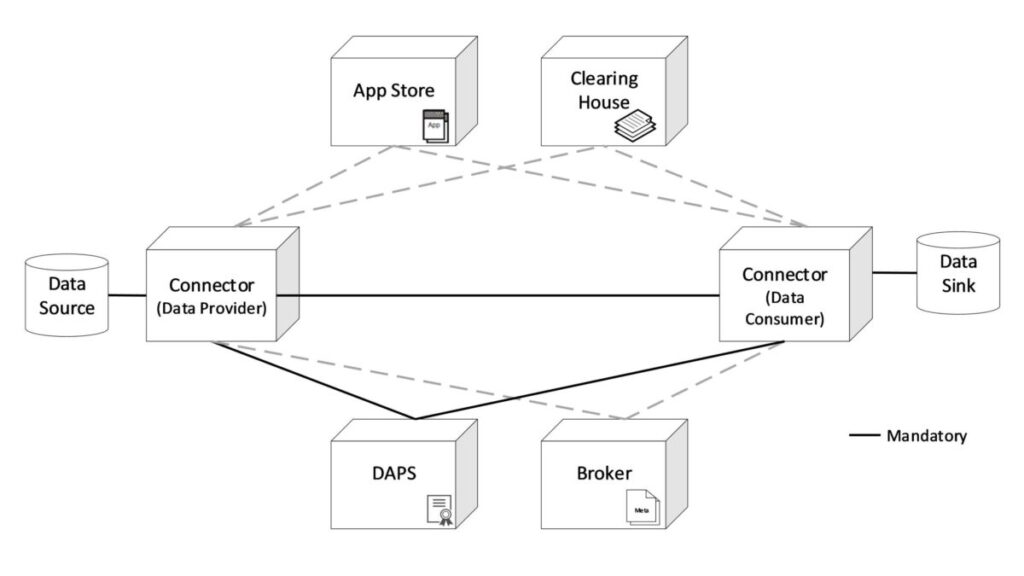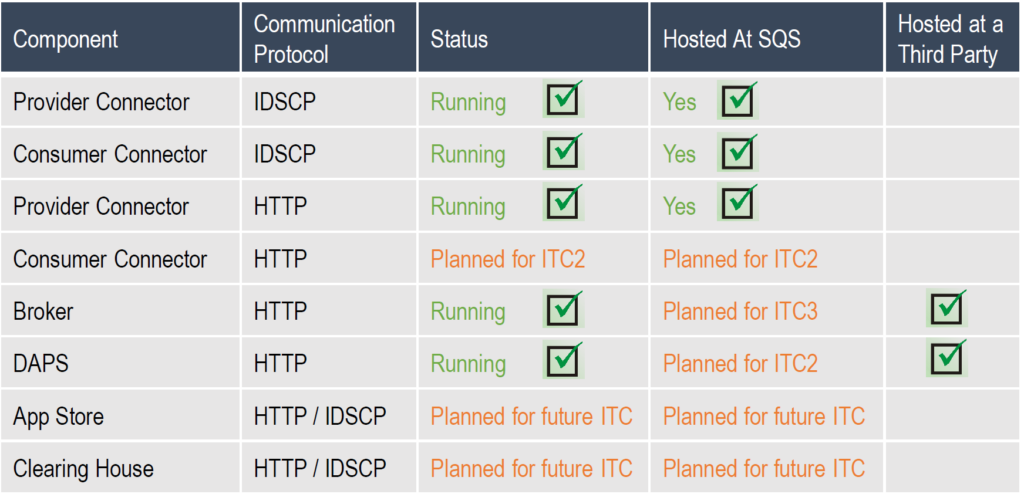The Integration Test Camp is open for everyone as part of a monthly event, which is usually announced two weeks before. Participants are given a two-hour time slot during which the entire infrastructure is available and reserved for them. During this time, the participants are in constant communication with the SQS team. Video calls allow both parties to see and share what is happening. Guidelines for the sessions specify each individual test step.
Step by step to a trusted IDS infrastructure
The goal is to build a test architecture that includes all components of the IDS ecosystem. To achieve this goal, SQS is taking a step-by-step approach: First, the basic architecture was developed. In each edition of the Integration Test Camp, new elements are added to this basic architecture.

In the architecture developed for the First Integration Test Camp there were:
- Connectors based on the Trusted Connector from Fraunhofer AISEC, supporting IDSCP communication protocol, installed in SQS facility. Some acted as providers and others as consumers. There was also DIVA connector from Fraunhofer ISST, supporting HTTP communication protocol and acting as provider, installed in SQS facility.
- Three different data sources:
- Real temperature sensor, sending a float with the temperature measure every five seconds
- Real motor making random movements, sending a json with the movements made every five seconds
- Then we have a way to send Controlled data using TestWorkFlow, a tool SQS developed, able to send any type of data participants need in a controlled way
- A Broker and a DAPS were offered as a service.
With this architecture, the participants were able to test the interoperability between connectors, mainly the handshake.
In the second edition of the Integration Test Camp, a DAPS have been installed in the SQS facility that was developed by Orbiter. The DAPS was programmed for test cases and represents the Meta-DAPS in the test design. It logs errors and enables participants to establish compatible communication between the connectors. Orbiter provides the entire technical system including logging and interactive parameter input for SQS to test different cases. Furthermore, German Edge Cloud provided a connector that supports the HTTP communication protocol. With this architecture, the participants were not only able to test the interoperability between connectors, but also to test certificates and the Dynamic Attribute Token management.

Integration Test Camp actual architecture
For the next edition, a Broker will be installed in the SQS facility, and participants will be able to also test registration at a broker and searching of other connectors information. After each edition, SQS publishes a set of test cases that could be used as reference for Interoperability Testing.
If you would like to participate also, please contact idsa_qaas@sqs.es to receive all information that are needed for the registration and preparation.



